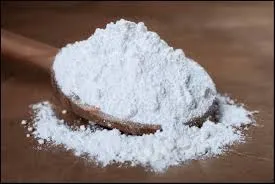
sweeteners 952 955 950
Understanding Sweeteners E951, E952, and E955
In an era where health consciousness is on the rise and sugar intake is being scrutinized, artificial sweeteners have gained immense popularity as alternatives to traditional sugar. Among these, three commonly referenced sweeteners are E951 (Aspartame), E952 (Cyclamate), and E955 (Sucralose). Each of these sweeteners has its unique properties, applications, and debates surrounding their safety and efficacy. Let’s delve into each of them.
E951 - Aspartame
E951, or Aspartame, is one of the most widely studied and used artificial sweeteners in the world. It is nearly 200 times sweeter than sugar, which means only a small amount is required to achieve the desired sweetness in food products. Aspartame is often found in diet soft drinks, sugar-free desserts, and various low-calorie and sugar-free products.
One of the most discussed aspects of Aspartame is its safety. Regulatory agencies around the globe, including the U.S. Food and Drug Administration (FDA), the European Food Safety Authority (EFSA), and the World Health Organization (WHO), have determined that aspartame is safe for human consumption, except for individuals with a rare genetic disorder known as phenylketonuria (PKU), who cannot metabolize phenylalanine, a component of aspartame.
Nevertheless, some studies and anecdotal reports have suggested potential links between aspartame and various health issues, including headaches, nausea, and even more severe conditions. The scientific consensus, however, still supports its safety when consumed within established daily intake limits.
E952 - Cyclamate
E952, or Cyclamate, was one of the first artificial sweeteners developed in the 1930s. Cyclamate is about 30 to 50 times sweeter than sugar and is often used in combination with other sweeteners to enhance flavor profiles. It is commonly found in low-calorie foods and beverages, particularly in some countries where its use is permitted.
sweeteners 952 955 950

Despite its sweetness and low-calorie content, cyclamate has been banned in the United States since the 1970s due to concerns over potential carcinogenic effects observed in some animal studies. Countries in Europe and elsewhere continue to permit its use, provided that it is within specific safety limits.
The ongoing debates about cyclamate largely center on concerns regarding its long-term effects on human health. The scientific community urges caution and further research, but many still enjoy cyclamate-sweetened products where available, often unaware of the controversies surrounding its safety.
E955 - Sucralose
E955, known as Sucralose, is another popular artificial sweetener made from sugar but modified to enhance its sweetness without adding calories. Sucralose is approximately 600 times sweeter than sugar, making it an efficient sweetening agent for a variety of products, including baked goods, beverages, and even sauces.
One of the attractive features of sucralose is its high stability under heat and acidic conditions, making it suitable for cooking and baking, unlike some other sweeteners that lose sweetness when heated. Moreover, it is not metabolized by the body, meaning it passes through the system without contributing calories.
The safety of sucralose has been supported by numerous studies, and regulatory bodies, such as the FDA and EFSA, have deemed it safe for consumption. However, some critics raise concerns about potential gut health implications and the long-term effects of consuming high amounts of artificial sweeteners like sucralose.
Conclusion
E951 (Aspartame), E952 (Cyclamate), and E955 (Sucralose) represent a segment of sweeteners that provide alternatives to traditional sugar, appealing to those aiming to reduce caloric intake or manage health concerns such as diabetes. While regulatory bodies assert their safety, the ongoing debates and research highlight the need for consumers to stay informed. As with any food additive, moderation and individual responses should guide consumption, and being aware of personal health conditions remains paramount in choosing the right sweetener. As the landscape of sweeteners continues to evolve, understanding the implications of these choices will help guide healthier dietary practices.
-
Pure Sodium Dichloroisocyanurate Dihydrate | Powerful DisinfectantNewsAug.29,2025
-
Industrial Chemicals: Quality & Purity for Every IndustryNewsAug.28,2025
-
Nitrile Rubber Honoring Strict Production StandardsNewsAug.22,2025
-
Aspartame Ingredients Honoring Food Safety ValuesNewsAug.22,2025
-
Fertilizer for Balanced Plant NutritionNewsAug.22,2025
-
Cyanide Gold Processing with High Purity AdditivesNewsAug.22,2025
-
Formic Acid in Textile Dyeing ApplicationsNewsAug.22,2025
Hebei Tenger Chemical Technology Co., Ltd. focuses on the chemical industry and is committed to the export service of chemical raw materials.
-

view more DiethanolisopropanolamineIn the ever-growing field of chemical solutions, diethanolisopropanolamine (DEIPA) stands out as a versatile and important compound. Due to its unique chemical structure and properties, DEIPA is of interest to various industries including construction, personal care, and agriculture. -

view more TriisopropanolamineTriisopropanolamine (TIPA) alkanol amine substance, is a kind of alcohol amine compound with amino and alcohol hydroxyl, and because of its molecules contains both amino and hydroxyl. -

view more Tetramethyl Thiuram DisulfideTetramethyl thiuram disulfide, also known as TMTD, is a white to light-yellow powder with a distinct sulfur-like odor. It is soluble in organic solvents such as benzene, acetone, and ethyl acetate, making it highly versatile for use in different formulations. TMTD is known for its excellent vulcanization acceleration properties, which makes it a key ingredient in the production of rubber products. Additionally, it acts as an effective fungicide and bactericide, making it valuable in agricultural applications. Its high purity and stability ensure consistent performance, making it a preferred choice for manufacturers across various industries.





